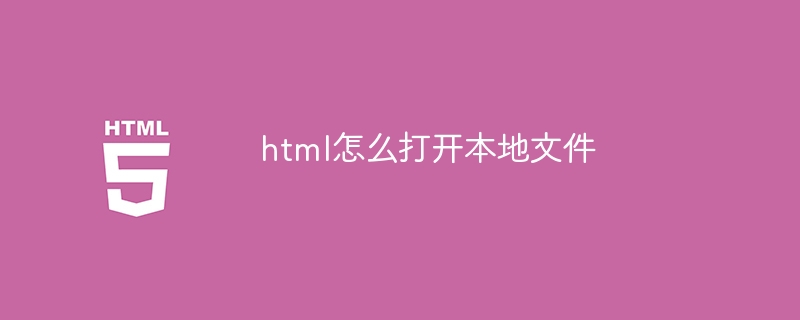How to open local file in html
sublime
<p>HTML can be used to open local files as follows: Create a .html file and import the jQuery library. Create an input field that allows the user to select a file. Listen to the file selection event and use a FileReader() object to read the file contents. Display the read file contents on the web page.<p>
 <p>How to open a local file using HTML
<p>HTML (Hypertext Markup Language) is commonly used to create web pages, but It can also be used to read and display local files.
<p> Steps:
<p>How to open a local file using HTML
<p>HTML (Hypertext Markup Language) is commonly used to create web pages, but It can also be used to read and display local files.
<p> Steps:
-
<p>Create HTML file:
- Use a text editor ( such as Notepad or Sublime Text) to create a new file.
- Save the file with the
.htmlextension (for example:myfile.html).
-
<p>Import jQuery:
- jQuery is a JavaScript library that makes manipulating HTML elements easier.
- Add the following code to the
<head>section of the HTML file:
<script src="https://code.jquery.com/jquery-3.6.0.min.js"></script>
Copy after login - <p>Create the input field:
- Add an
<input>element to allow the user to select a file to open:
<input type="file">
Copy after login - Add an
- <p>Listen to the file selection event:
- Use jQuery's
change()event to listen to the file selection:
<script> $("input[type=file]").change(function() { // 文件选择后执行此函数 }); </script>Copy after login - Use jQuery's
- <p>Handling file selection:
- In the event handler function, get the selected file and use the
FileReader()object to read the contents of the file:
var file = this.files[0]; var reader = new FileReader(); reader.onload = function() { // 读取的文件内容存储在 `reader.result` 中 }; reader.readAsText(file);Copy after login - In the event handler function, get the selected file and use the
- <p>Display file content:
- After reading the file content, you can use HTML elements (such as
<div>or<p>) to display it on the web page.
- After reading the file content, you can use HTML elements (such as
<head>
<script src="https://code.jquery.com/jquery-3.6.0.min.js"></script>
<input type="file">
<script>
$("input[type=file]").change(function() {
var file = this.files[0];
var reader = new FileReader();
reader.onload = function() {
$("#result").html(reader.result);
};
reader.readAsText(file);
});
</script>


